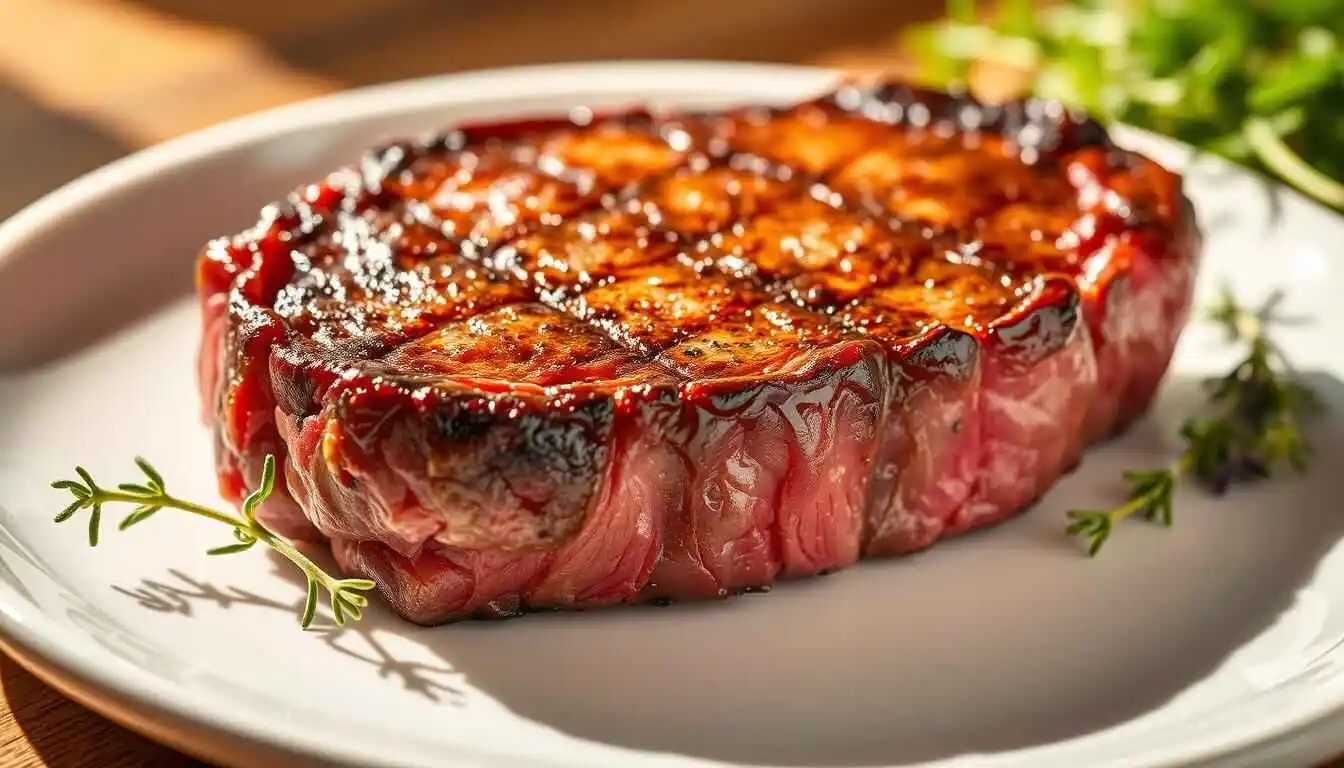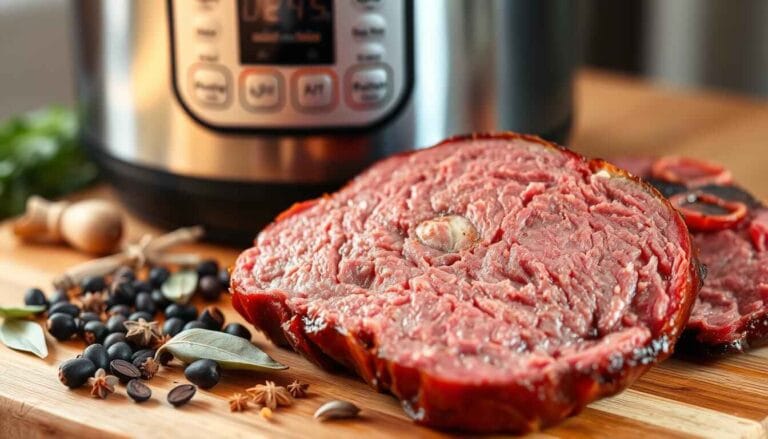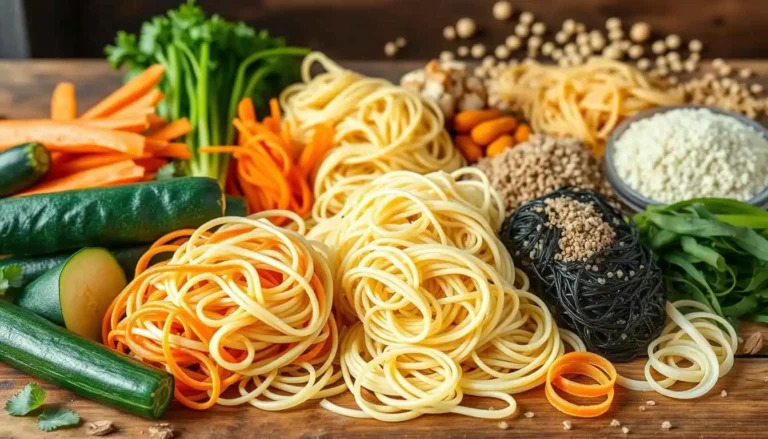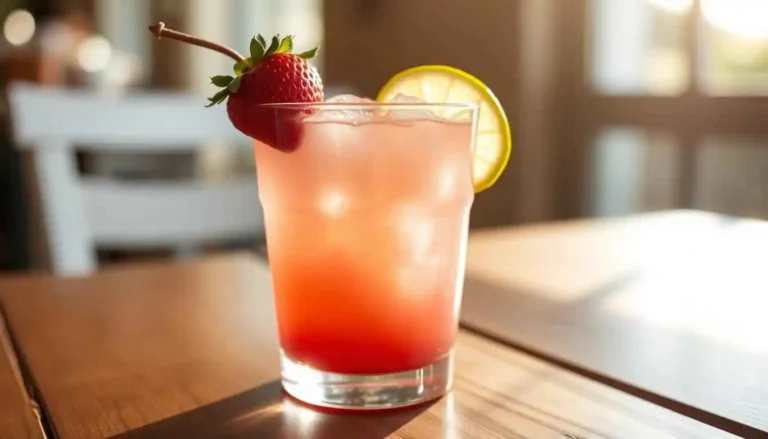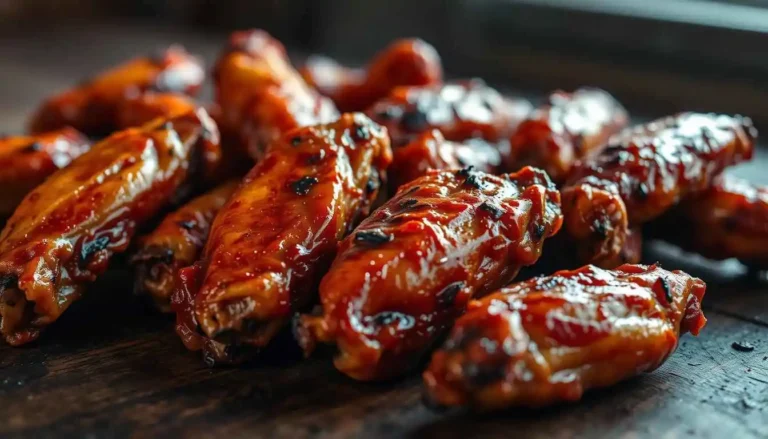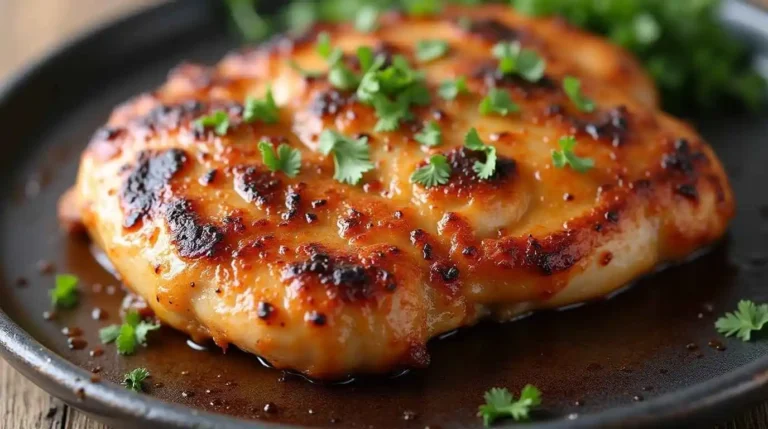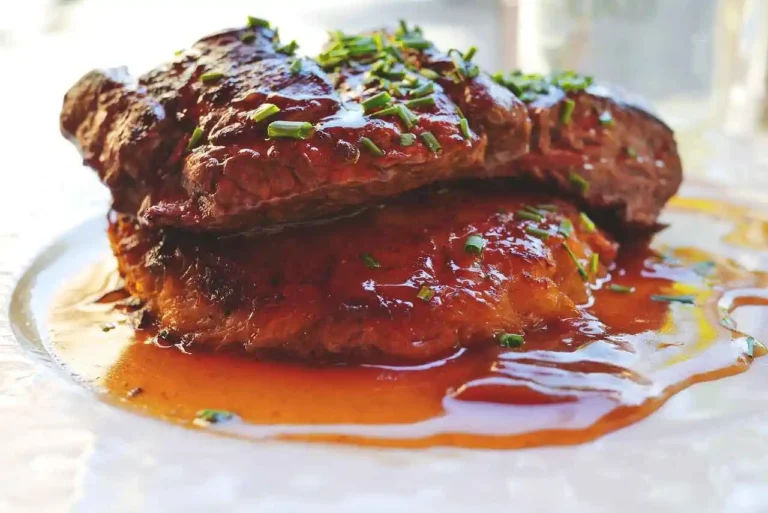Delicious Medium Rare Steak: Tips and Tricks
It is not easy to get the perfect steak, but if you follow the proper instructions, you will make it perfect. You should end up with a juicy and flavorful steak.
This article is for grill pros and beginners alike. It will walk you through choosing, preparing, and seasoning the perfect ribeye steak.
Follow these instructions, and you will prepare a medium rare steak guaranteed to impress family and friends!
Table of Contents
Key Takeaways
- Learn how to select the ideal cut of meat for the perfect steak
- Master the skill of seasoning and grilling a great steak
- Master the skill of cooking a juicy and flavorful steak
- Discover why you should let your steak rest
- Get instructions on serving and enjoying your steak cooked to the perfect doneness.
What Makes a Perfect Medium Rare Steak
The ideal medium rare steak is a matter of protein denaturation and heat. It is a question of knowing the science and inspecting for visual parameters of doneness.
The Science of Medium Rare
When cooking a medium rare steak, denatured proteins are required, but not overcooked—the proteins twist and contract, changing the steak’s color and texture. The internal temperature of a medium rare steak is 130°F up to 135°F, which is appropriate for preserving the steak’s juiciness and tenderness.
Understanding this process enables you to obtain a perfectly cooked ribeye filet.
Temperature and Color Guidelines
In establishing whether your steak is cooked medium rare, color and temperature are the clues you should check. Internal temperature is confirmed, most importantly, by the meat thermometer. Your medium-cooked steak should be warm, reddish, with a light pink color in the center. The following guidelines are most vital:
| Doneness | Internal Temperature (°F) | Color at Center |
| Medium Rare | 130-135 | Warm Red |
| Medium | 140-145 | Pink |
Adhere to these regulations to achieve the perfect medium rare steak. Whether you are cooking a ribeye steak or using a different technique, you can’t go wrong.
Selecting the Ideal Cuts for Medium Rare Steak
Choosing the proper cut is vital when preparing a medium rare steak. The type and quality of the cut determine the final taste, so one should remain aware of the different possibilities.
Primes for Medium-Rare Cooking
Prime cuts are the most appropriate for a medium rare steak. They’re tender and flavorful. The prime rib eye is ideal due to its marbling. When cooked to the exact right extent, the steak is juicy and delicious.
Ribeye Variations
Ribeyes are ideal when served medium rare as they have a rich flavor and soft consistency. You can select from a few variations of the ribeyes.
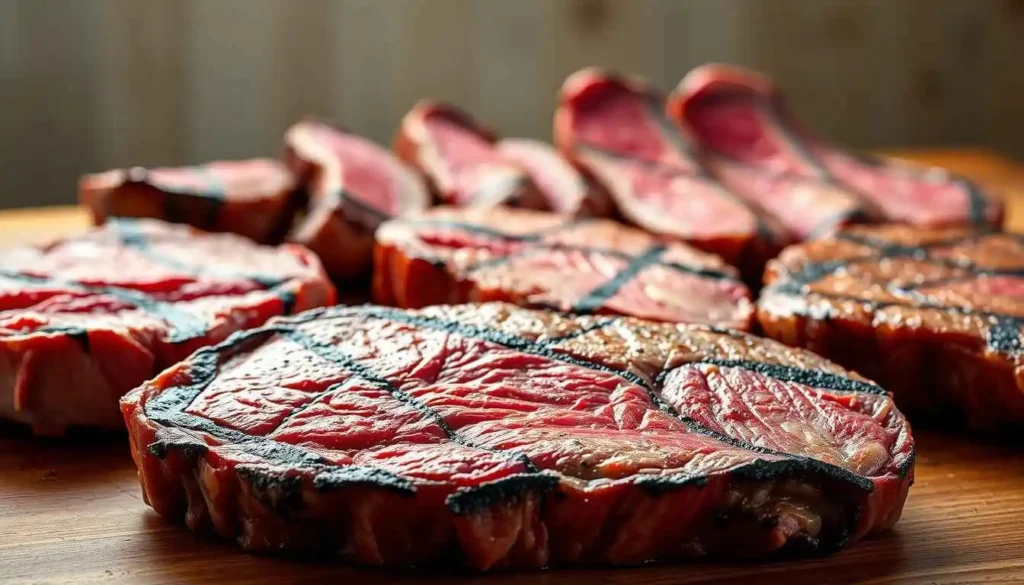
Bone-in Ribeye Benefits
The bone-in ribeye has several advantages. The bone infuses the meat with flavor and cooks the steak consistently, giving it an even flavor.
Angus Beef Ribeye Details
Angus ribeye steak is a superior type of beef. Angus beef is famous for its marbling. This makes the steak tender and flavorful.
Rib Steak vs. Ribeye
You should know the difference between a rib steak and a ribeye. Both of them derive from the rib cut. However, the ribeye is more marbled and is thus most desirable when cooked medium rare.
Marbling and Quality Indicators
One indicator of quality in steaks is marbling. It is responsible for the steak’s tenderness, flavor, and juiciness. Cuts with good marbling should be used for the most desirable flavor.
| Cut | Marbling Level | Tenderness |
| Ribeye | High | Very Tender |
| Prime Rib Eye | Very High | Extremely Tender |
| Angus Ribeye | High | Very Tender |
Remembering the following, you can choose the perfect cut of a deliciously medium rare steak.
Principal Preparation Methods
The key to a delicious medium rare steak is preparation, which significantly influences the taste.
Taking Steak To Room Temperature
It is advisable to bring your steak up to room temperature before cooking it. This will ensure that it cooks evenly. Remove the steak from the fridge and let it rest for 30-45 minutes before cooking.
Seasoning Techniques for the Best Flavor
Seasoning is the key to a flavorful steak. There are many possibilities for adding flavor to your ribeye.
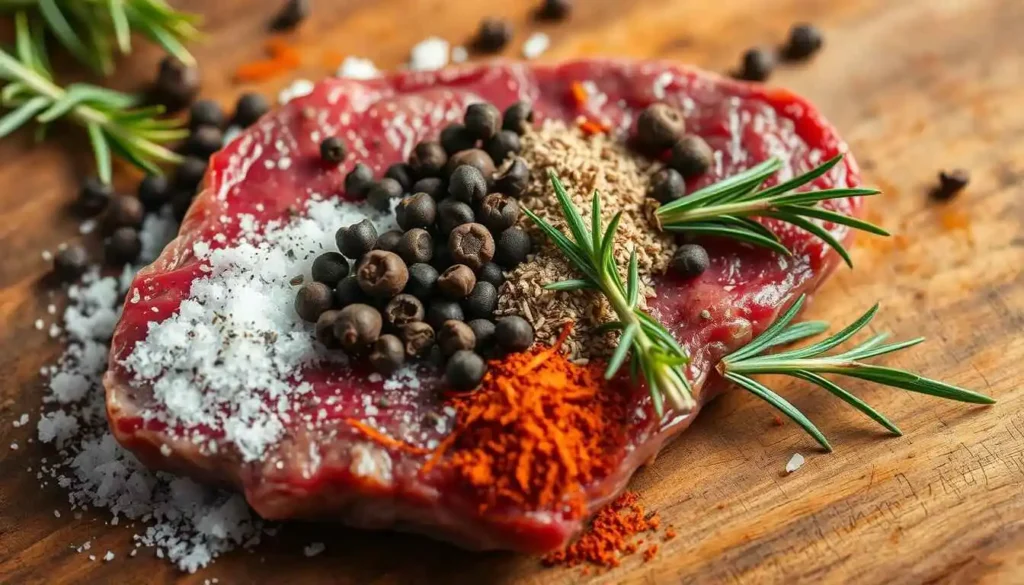
Traditional Salt and Pepper Method
One of the quickest and most rewarding ways to flavor your steak is with salt and pepper. It brings out the steak’s natural taste. The freshest ground pepper and flakiest salt give the most flavor.
Creating a Personalized Blended Seasoning for Ribs
For extra flavor, try a homemade spice mixture. Mix garlic powder with paprika and dried herbs for a taste that suits your ribeye.
When To Use Marinades
The marinades make the steak more flavorful. Use them if you prefer intense flavors. Just avoid marinating for too long, as that tenderizes the steak.
Prepare the Cooking Surface
When grilling or cooking with a cast-iron skillet, preparing the surface is a good idea. Heat your grill or skillet to the correct temperature. Ensure that it’s clean and oiled to avoid sticking.
By following these basic preparation techniques, you’ll be on your way to a properly prepared medium rare steak. The flavor of the steak will heavily depend on how you prepare it and the quality of the steak you’re using.
Cooking Methods of Medium-Rare Steak
There are several methods of cooking a medium rare steak, each with pros and cons. It is a question of equipment, taste, and the type of steak.
Cast Iron Skillet Method
One of the most popular is cooking with cast-iron skillets. The pan’s heat retention assures even cooking.
Step-by-Step Cast Iron Process
To prepare a steak in a cast-iron pan, heat the pan on high. Season the steak with salt, pepper, and any desired seasonings. Coat the pan with some oil and sear the steak for 2-3 minutes a side, depending on how thick the cut is. Cook the steak as desired.
Basting with Butter for Added Flavor
Baste your steak with butter for added flavor during the final minute of cooking. Melt butter in the pan, then tilt the pan and spoon the butter over the steak a few times. This method introduces flavor and tenderness to the steak.
Grilling a Ribeye to Medium-Rare
Another ideal method of cooking a medium rare steak is on the grill. It is perfect for cuts such as ribeye. The grill cooks the outside well with a nice crust and keeps the interior juicy.
Direct vs. Indirect Heat Methods
There are two ways to use heat when you grill: indirect and direct heat. In direct heat, you grill the steak over the flame. In indirect heat, the steak is not cooked over the direct flame. You employ both to cook a medium rare steak: sear it with direct heat and complete it with indirect heat.
Management of Flare-ups and Hot Spots
Lubricate the grates and keep your grill clean to avoid flare-ups and hot spots. Should a flare-up occur, transfer the steak to a cooler grill area until the flame dies out.
Oven Finishing Techniques
Finishing the steak in the oven is an excellent method of even cooking and is optimal for thicker pieces of meat.
Reverse Sear Method
Reverse searing involves cooking the steak in the oven before searing it in a pan. This method ensures a properly cooked interior with a crispy crust.
Ribeye Roast to Medium-Rare
For a ribeye roast, the most crucial thing is roasting to the appropriate internal temperature. Cook using a meat thermometer and aim for 130°F – 135°F for medium rare.
Testing for Perfect Medium-Rare Doneness
The key to a perfect medium rare is determining when it is just right. It is possible to use one of three simple methods of testing.
Proper Use of a Meat Thermometer
A meat thermometer is a more precise way of testing your steak’s internal temperature. When your steak is medium rare, it should read 130°F to 135°F. To insert the thermometer correctly, place it in the thickest area of the steak but not in fat or bone.
The Touch Test Method
The traditional method of determining the steak’s firmness is the touch test. Gently press the steak with your finger. A medium rare steak is soft but springy, like the flesh between your thumb and index finger feels when your hand is relaxed.
Visual Signs of Medium-Rare
The second way of testing for doneness is visual examination. A medium rare steak should have a reddish-warm color in the center. You can also test it by cutting into the meat a bit; the center should be pink. A cooked medium-rare steak should also have a good sear on the surface.
As a culinary expert, the ideal steak is a personal choice, but any decent steak must always possess a nice balance of flavor, texture, and doneness.
Combining these techniques will cook a great steak with every grill or steak bake.
Troubleshoot Common Problems of Medium-Rare Steak
Grilling a medium-rare steak is not a formula alone. It is also about being familiar with how to troubleshoot common issues. Whether you are grilling ribeye steak or employing indoor cooking, such common problems as uneven cooking and overcooking may occur.
Dealing with Uneven Cooking
Uneven cooking is usually due to either cooking temperature or steak preparation problems. Bring the steak to room temperature before cooking. Use a thermometer to measure the heat of the grill or frying pan.
You should cook a bone-in ribeye steak based on its thickness and heat pattern.
Restoration of Overcooked Steak
Remove your overcooked steak from the heat instantly. Let it rest so the juices redistribute and the meat becomes tender. Use a thermometer to ensure a medium-rare internal temperature to avoid overcooking your meat.
Thickness Adjustment for Steak
The cooking time is based on the thickness of the steak. Thicker steaks take more time to cook, but thinner ones cook quickly. A thick ribeye roast should be seared with high heat and finished low for a perfect medium-rare.
Indoor Cooking Challenges and Solutions
Indoor steak cooking has its pitfalls, which range from a lack of smokiness to uneven cooking. Cook with a cast-iron pan to get a nice sear. Finish the steak in the oven for even cooking and a tasty medium-rare.
| Issue | Solution |
| Uneven Cooking | Ensure the steak is at room temperature. Verify grill or skillet heat. |
| Overcooking | Remove from heat; let rest; use a thermometer. |
| Steak Thickness | Adjust cooking time based on thickness; use combined cooking methods for thick steaks. |
| Indoor Cooking Challenges | Use a cast-iron skillet for searing; finish in the oven for even cooking. |
Conclusion
You now have the methods of cooking a medium-rare steak. Whether you’re searing a ribeye with your favorite spice or testing a new cut of meat, the key is in the details. With a bit of practice, you should get it just right.
To achieve a perfect medium-rare steak, let it reach room temperature. Don’t hesitate to use various seasonings. Use a meat thermometer to test the internal temperature. Thus, it will be ideal.
By following this guide, you will promptly be cooking medium steaks. They astound anyone. So heat your grill pan or skillet and have a nicely cooked steak.
Frequently Asked Questions
What is the best way to cook a ribeye?
The best way to cook them is by pan-searing them in a cast-iron or grill pan. This gives them a nice crust on the outside and keeps the inside moist.
How do you get a perfect medium-rare steak?
Cook the steak to 130°F—135°F (54°C—57°C) for a perfect medium-rare. Check for doneness using temperature readings, touch tests, and visual inspections.
What is the distinction between a ribeye and a rib steak?
The ribeye is taken from the rib section, which is famous for its marbling and flavor. A rib steak is a more general term taken from the rib section, but may not exhibit the same marbling.
How do you season a ribeye steak to perfection?
Season with salt, pepper, and any other seasonings you like. Consider developing your seasoning blend to enhance the steak’s natural flavors.
Can you cook a ribeye in the oven?
Yes, you can cook a ribeye steak in the oven. Use the reverse sear method: First, cook it on low heat, then sear it on high heat.
How do I prepare a bone-in ribeye steak?
Cooking a bone-in ribeye is the same process as cooking a boneless one, but you might need to adjust the cooking times because the bone does affect the distribution of heat.
What are the advantages of cooking steak in a cast-iron pan?
Cooking a steak in a cast-iron pan has numerous advantages. It evenly cooks the steak. It facilitates creating a good crust and sear. It is an excellent way of cooking a steak.
How do I prevent overcooking my steak?
Insert a meat thermometer to ensure the internal temperature. Remove the steak when it reaches your desired doneness. Once removed, the temperature will continue to climb a bit.
Tried This Recipe? Tell Us What You Think!
There are no reviews yet. Be the first one to write one.

